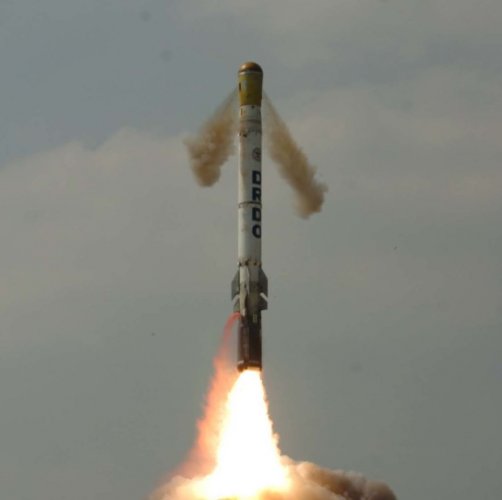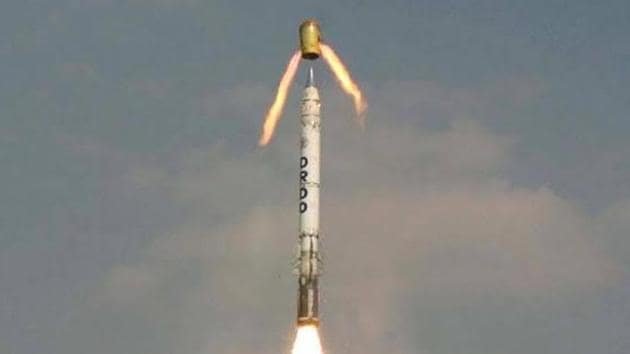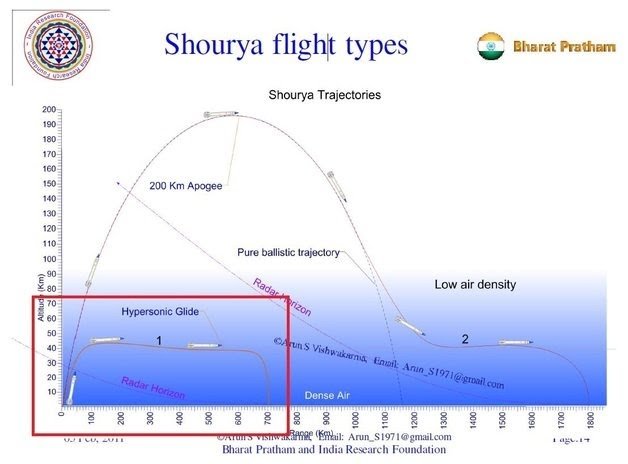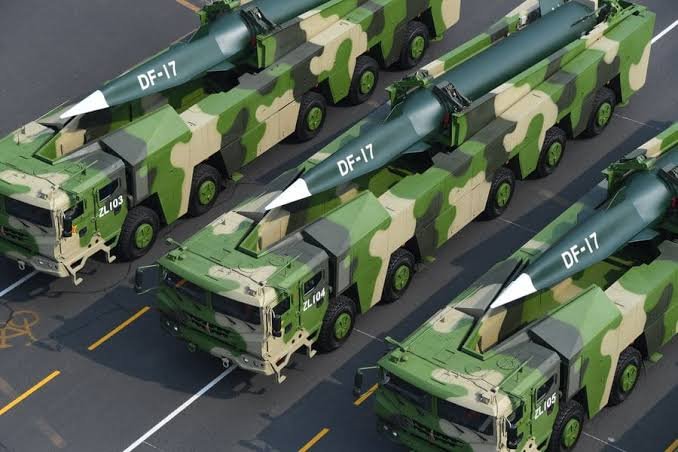mokahete
ACCESS: Restricted
- Joined
- 18 April 2025
- Messages
- 27
- Reaction score
- 12
Na, I'm of the belief that it uses solid fuel.I still doubt zircon is purely rocket powered. Even assuming liquid fuel, look at size and weight of air launched missiles like KH-22. Now imagine how much the first stage external booster would have to struggle with load. An air breathing engine is always going to be more mass efficient and every Soviet/Russian surface launched supersonic missile I can think of was an air breather. It would be quite surprising if Zircon was a purely rocket driven missile. Additionally , liquid fuel would raise a lot of safety issues for ship/sub use. The Russians have used liquid fueled SLBMs in the past but I do not believe for some decades as the USSR; the USN never accepted the practice with early exception of Regulous.
Well large part of my believing zircon to be rocket sustained is based on this Indian missile that called "Shaurya" as mentioned before.



Length~10m, width~0.74m, weight 6+tons.
Uses solid fuel, two stage missile.
Here's the article from 2010.
*******Shaurya surfaces as India’s underwater nuclear missile: New “hybrid” technology more advanced than China’s or Pakistan’s
By Ajai Shukla
Defexpo 2010, New Delhi
The country’s top defence scientist has, for the first time, revealed that India’s new Shaurya missile, which can carry a one-ton nuclear warhead over a distance of 750 kilometers, is specially designed to be fired from Indian submarines, and could form the crucial third leg of India’s nuclear deterrent.
If launched from a submarine off the China coast, it is capable of reaching many of China’s major cities, including Beijing, Nanjing and Shanghai.
Air and land-based nuclear weapons are delivered to their targets by fighter aircraft and ballistic missiles respectively. Since these can be knocked out by an enemy first strike, the most reliable nuclear deterrent has traditionally been underwater, missiles hidden in a submarine.
Dr VK Saraswat, the DRDO chief and Scientific Advisor to the Defence Minister, revealed to Business Standard at the ongoing Defexpo 2010, “We have designed the Shaurya so that it can be launched from under water as easily as from land. The gas-filled canister that houses the missile fits easily into a submarine. The underwater leg of the nuclear triad needs to be totally reliable and needs a state-of-the-art missile.”
India’s undersea deterrent has so far revolved around the K-15 ballistic missile, built with significant help from Russia. The K-15 was to equip the INS Arihant, India’s lone nuclear-powered submarine, which is being constructed in Visakhapatnam. But now, after rigorous underwater testing, the Shaurya could be the mainstay of Arihant’s arsenal.
“The Shaurya was developed from ground up as a submarine-capable missile”, confirms Dr Prahlada, the top DRDO scientist responsible for liaising with the military. “Every piece of technology for fitting it in a submarine is already in place.”
Shortly before the Defexpo 2010, Dr Saraswat had publicly stated that India’s missile technology was ahead of China’s and Pakistan’s.
Now top DRDO scientists have revealed that the Shaurya is not a ballistic missile, as it has been thought to be; it is actually a hypersonic cruise missile, which never leaves the atmosphere. A ballistic missile is like a stone being lobbed towards a target. Rockets toss it upwards and towards the target; after the rocket burns out, gravity pulls the missile warhead down towards the target. Buffeted by wind and re-entry forces, accuracy is a problem; and, since the ballistic missile’s path is predictable, shooting it down is relatively easy.
The Shaurya has none of these issues. Its solid-fuel, two-stage rocket accelerates the missile to six times the speed of sound before it reaches an altitude of 40 kilometers (125,000 feet), after which it levels out and cruises towards the target, powered by its onboard fuel. While ballistic missiles cannot correct their course midway, the Shaurya is an intelligent missile. Onboard navigation computers kick in near the target, guiding the missile to the target and eliminating errors that inevitably creep in during its turbulent journey.
The Shaurya, say DRDO sources, will strike within 20-30 metres of its target after travelling 750 kilometres.
Conventional cruise missiles, like the American Tomahawk and the Indo-Russian Brahmos, offer similar accuracy. But their air-breathing engines carry them along slowly, rendering them vulnerable to enemy aircraft and missiles. The Shaurya’s solid-fuel, air-independent engine propels it along at hypersonic speeds, leaving enemy fighters and missiles far behind.
“I would say the Shaurya a hybrid propulsion missile”, says Dr Saraswat. “Like a ballistic missile, it is powered by solid fuel. And, like a cruise missile, it can guide itself right up to the target.”
Making the Shaurya even more capable is its ability to manoeuvre, following a twisting path to the target that makes it very difficult to shoot it down. In contrast, a ballistic missile is predictable; its trajectory gives away its target and its path to it."*******


